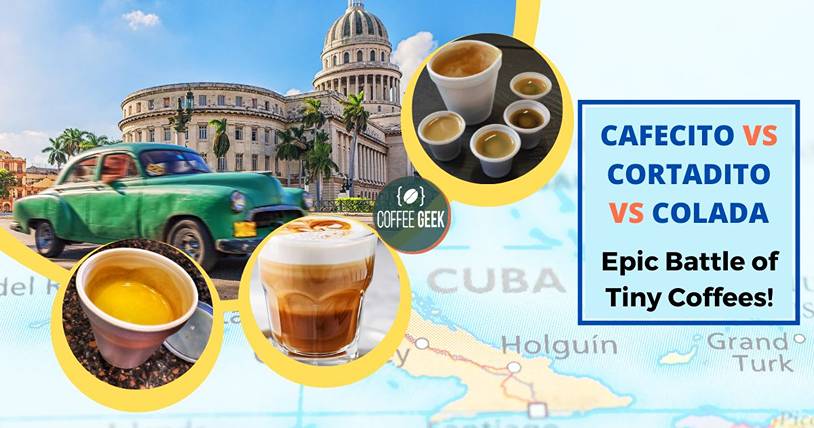Cuban coffee holds a special place in the hearts of not just its locals but also coffee enthusiasts worldwide.
The intriguing love triangle of Cafecito vs Cortadito vs Colada has something to offer for everyone.
These iconic Cuban coffee variants each have their own unique characteristics that set them apart from their caffeinated counterparts.
As you dive into the world of Cuban coffee, you’ll notice that these three brews are more than just a delightful blend of beans and sugar.
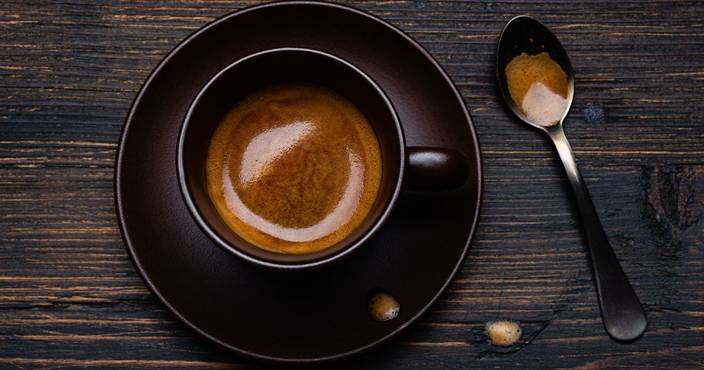
They also represent a cherished cultural tradition that spans across cities and oceans. The simple act of sipping on a cup of these delectable elixirs is a testament to the richness of the Cuban coffee experience.
Key Takeaways
Understanding the distinct features of Cafecito, Cortadito, and Colada sets you up for an unforgettable coffee adventure.
Cuban coffee beverages are not only delicious but also hold a strong cultural significance that goes beyond their rich taste.
Mastering the language of Cuban coffee will enhance your experience and give you the confidence to delve deeper into this unique realm of caffeine and culture.
- Cafecito vs Cortadito vs Colada: The Love Triangle
- All Things Sweet and Frothy
- From Miami to Havana: A Cultural Blend
- The Language of Coffee
- Coffee With a Side of Socializing
- Advanced Sipping: How to DIY Your Cuban Coffee
- Barista's Corner: Tips, Tricks, and Coffee Hacks
- Conclusion
- Frequently Asked Questions
Cafecito vs Cortadito vs Colada: The Love Triangle
Ah, the enchanting world of Cuban coffee! You’re about to embark on a delicious journey into the seductive love triangle of cafecito, cortadito, and colada.
Just sit back, relax, and grab your demitasse, because we’re diving in.
Picture this: you walk into a charming Cuban cafe in Miami, the intoxicating aroma of freshly brewed espresso hits you, and there they are – three alluring beverages flirtatiously whispering your name.
Caught in this love triangle, how do you choose?
First, meet the Cafecito. This dark and handsome shot of Cuban-style espresso has a sweet tooth, thanks to a generous helping of sugar it shares with the espresso.
Just a tiny sip of this steamy affair, and you’ll understand why it’s the heartthrob of Cuban coffee.
Now, enter the Cortadito. Imagine the cafecito with a soft side. This delightful concoction is a Cuban café con leche, seducing your taste buds with a silky blend of espresso and steamed, hot milk.
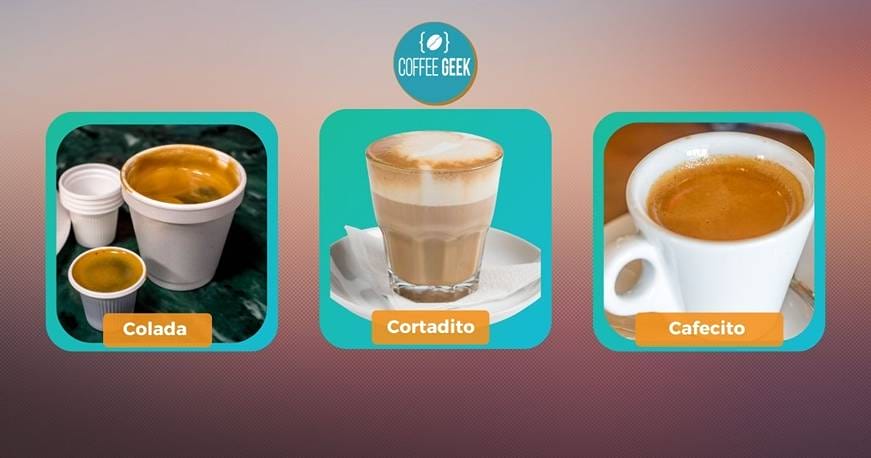
It’s the sweet, milky embrace that’ll have you daydreaming about Havana afternoons.
Finally, the Colada. She’s the life of the party. With enough coffee to share among friends and family, this tempting temptress of Cuban espresso is all about bringing people together.
Just be sure to keep the small plastic cups handy, because sipping these tantalizing shots in good company is what it’s all about.
So, there you have it, a breve insight into the love triangle that is Cafecito, Cortadito, and Colada. Next time you find yourself in a Cuban cafe, you’ll know just what to order to swoon your taste buds.
Just remember, indulging in this tri-affair of Cuban coffee means sharing the love and savoring every last drop.
All Things Sweet and Frothy
Espumita: The Story of Froth
Ah, the espumita. The delightful frothy layer that sits atop your Cuban coffee like a crown. It’s a symbol of a well-made cafecito, cortadito, or colada. You might wonder how it’s made?
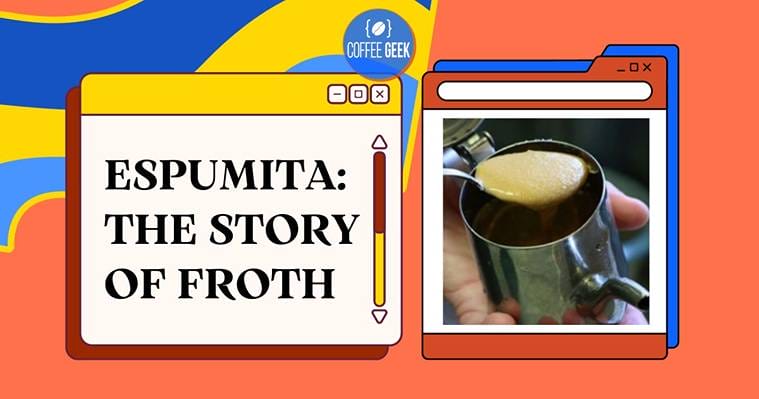
Fear not, for we shall reveal the secret. As you vigorously mix the first few drops of espresso with the sugar, a glorious transformation occurs.
A marriage between the caffeinated goodness and the sweet crystals of joy, giving birth to the espumita you so cherish.
Demerara Sugar vs Brown Sugar
Now let’s address the elephant in the room – or rather, the sugar in the jar. You might be torn between using demerara sugar and brown sugar for your coffee concoctions.
Both these sweet refineries have their merits:
Demerara sugar: Coarse, large-grained, with a subtle toffee taste. It’s popular among coffee aficionados who appreciate a touch of caramel. (P.S.: It’s also a fancy-sounding name for impressing your friends)
Brown sugar: A little more refined but with a hint of molasses. In coffees, it may provide a smoother, almost comforting sweetness that envelopes your taste buds in a sugary embrace.
It’s a tough choice, we know. But ultimately, it’s your cup of coffee and your call.
Cuban Latte vs Macchiato vs Cappuccino
Finally, let’s untangle the web of confusion surrounding the Latte, Macchiato, and Cappuccino.

After all, you should know what you’re sipping!
Cuban Latte: A delicious fusion of creamy milk and sweetened Cuban espresso. Picture a morning when you’re in the mood for a classic caf con leche but with a twist of Cuban flair – this is your go-to drink.
Macchiato: Basically an espresso wearing a tiny hat made of frothy milk – it gives you the best of both worlds. The boldness of the espresso with a little softness from the milky hat. Who can say no to that?
Cappuccino: The epitome of balance. Espresso, steamed milk, and milk froth come together in perfect harmony to create this classic Italian masterpiece. Elegant enough to accompany your suit-clad mornings yet cozy enough to wrap you in warmth on a rainy day.
And there you have it. You’re now well-equipped with coffee knowledge sure to make your fellow caffeine enthusiasts jealous. Remember, when life hands you coffee beans, make the most glorious espumita ever seen.
From Miami to Havana: A Cultural Blend
Coffee in Miami’s Ventanitas
When strolling through the streets of Miami, you’ll encounter the famous ventanitas, small windows where coffee and pastries are served.
In these charming spots, a lively coffee culture thrives; friends, family, and even strangers gather to enjoy coladas, cafecitos, and cortaditos.
Whether you’re a local or a curious tourist, these ventanitas offer a taste of authentic Cuban coffee culture right in the heart of Miami.
The Cuban Pull in Little Havana
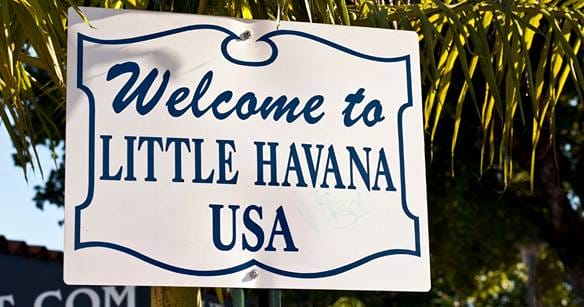
As you explore, make your way to Little Havana, Miami’s Cuban heart. Here you can find a unique blend of cultures created by generations of Cuban-Americans.
With street murals and music dancing through the air, you’ll feel the vibrant Cuban influence on every corner. Stop at one of the ventanitas and enjoy a cortadito as you watch elders play dominoes and friends exchange stories.
Experience the “Cuban pull” – a sense of belonging that draws both native Cubans and Miami locals together over cups of perfectly prepared coffee.
Coffee at El Pub and Versailles
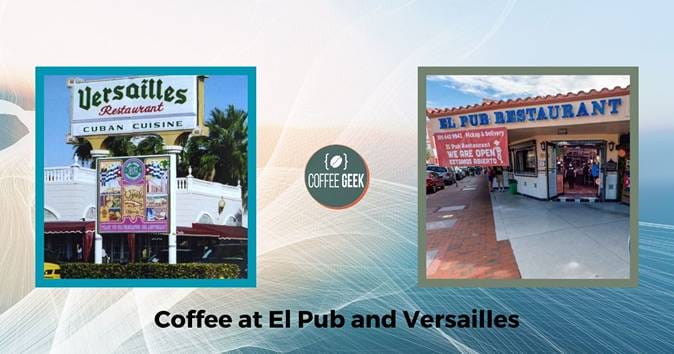
When seeking the best coffee spots in Little Havana, be sure to visit El Pub and Versailles, two beloved establishments with their own unique charm. Indulge in a cortadito at El Pub, a cozy and intimate spot with walls adorned with Cuban artwork.
Your ventanita exploration wouldn’t be complete, though, without stopping at Versailles, the iconic restaurant known for its exquisite Cuban cuisine and legendary coladas. Trust us, your taste buds will thank you.
When in Cuba, Do as the Cubans Do
Whether you find yourself in the streets of Miami or the cobblestone alleys of Havana, embracing the Cuban coffee culture is a must.
So when you come across a ventanita or a Cuban bar in your travels, do as the Cubans do: order a cafecito, a cortadito, or a colada, then sit back and savor the rich taste and lively atmosphere.
Here’s to the perfect blend of Miami’s and Havana’s caffeinated delights!
The Language of Coffee
Decoding Cuban Coffee Terminology
Ah, the world of coffee… a universe filled with unique flavors and languages that can make anyone a bit dizzy. Welcome to the party, my friend! Let’s clarify some Cuban coffee terms to help you navigate this caffeinated culture.
First, meet the cafecito, also known as Café Cubano or Cuban shot. It’s a small but powerful punch of coffee with sugar. Now, imagine the cafecito gets an upgrade and becomes super social – you have the colada.
The colada is essentially a sweetened espresso in a large cup, ready to be shared with your friends and family. Coffee time has never been more fun!
Next, get acquainted with the cortadito, a cousin of the cafecito. This Cuban delight includes both espresso and milk to create the perfect taste of these different types.
Though related to the Spanish and Portuguese cortado, the cortadito puts its own Cuban spin on things.
Spanish Influence and Spanglish Sips
As you may have guessed, Spanish culture plays a significant role in coffee. Café has become synonymous with coffee itself, thanks to our Latin friends.
In this melting pot of linguistic flavor, one can expect words, styles, and traditions to mix as fast as you can order your next coffee!
While exploring the cafecito, cortadito, and colada, you’re also taking a sip of Spanglish history (how fascinating!).
From the Cuban shot to that milky cortadito, each drink reveals a tale of cultural fusion that will surely warm your heart… or maybe it’s just the caffeine talking.
So there you have it, your brief guide to the language of coffee. Enjoy your Cuban coffee journey and may the caffeine be with you!
Coffee With a Side of Socializing
You know that warm, fuzzy feeling you get when you accidentally overhear a hilarious conversation between strangers at a café? Well, Cuban coffee is here to elevate that experience.
These popular Cuban coffee options – Cafecito, Cortadito, and Colada – are not only a treat for your tastebuds but also a centerpiece for social activity.
Picture yourself walking into a Cuban café, ordering a Colada, and heartily chatting about the weirdest weather patterns with your friends, family or even that eccentric gentleman in the corner.
Yes, you read that right; the Colada is meant to be shared!
Often brewed using a Moka pot and served in a large mug, this strong and sweet coffee is accompanied by smaller cups for you and your fellow caffeine enthusiasts to enjoy together source.
It doesn’t get more social than that, now does it?
But wait! There’s more fun to be had. If you are in the mood for something bolder and want to avoid third-wheeling someone’s Colada-sharing party, fear not! The Cafecito, also known as Café Cubano, is here for you.
This small shot of robust coffee sweetened with sugar will give you just the right amount of pep in your step to spark up a conversation with the lovely barista or your fellow patrons source.
Now, if you are someone who enjoys striking the perfect balance between a pick-me-up and a creamy delight, make your grand entrance by ordering a Cortadito.
This single serving of coffee is “cut” with steamed, whole milk, giving you a smooth and satisfying experience source. Share a Cortadito with a friend, or keep it all for yourself – we won’t judge!
So, the next time you find yourself craving coffee and a lively environment, why not step into the vibrant world of coffee culture?
Don’t be a stranger; embrace the warmth and sociability of the Cafecito, Cortadito, and Colada. Your tastebuds and newfound friends will thank you.
| Aspect | Cafecito | Cortadito | Colada |
|---|---|---|---|
| Size | Small | Small to medium | Large |
| Coffee Ratio | Strong coffee | Strong coffee with a dash of milk | Strong coffee served in a communal cup |
| Milk Ratio | Minimal to none | Equal parts coffee and steamed milk | None |
| Serving Style | Single shot | Single shot with steamed milk | Served in a communal cup with smaller cups for sharing |
| Sweetness | Usually unsweetened | Can be sweetened | Often sweetened |
| Presentation | Served in a small cup | Served in a small glass | Served in a larger communal cup, with smaller cups for sharing |
| Popular in | Cuban and Latin American cultures | Cuban and Latin American cultures | Cuban and Latin American cultures |
Advanced Sipping: How to DIY Your Cuban Coffee
Brewing in a Moka Pot
Ah, the Moka Pot – your trusty companion in the world of types of Cuban coffee. This little gadget can turn you into a cafecito, cortadito, or colada mastermind.
First things first: unscrew the lid and take out the filter. Then, fill the bottom half with water up to the little knob and place the filter back in along with your grounds of choice, preferably Pilon or Cafe Bustelo.
Now, screw the top back on and let the magic happen.

Cafe con Leche: A Recipe
If you’re looking to indulge in a Cuban latte, Café con Leche has your back. After brew process that sweetened espresso in your handy Pot, you’ll need to mix it with milk.
To be more specific, you should blend your cafecito with a few ounces of milk. Want to take it up a notch?
Add evaporated milk for that extra-sweet kick. Voilà! You’ve just made a delicious Café con Leche.
The Stovetop Cuban Espresso Brewer Technique
All hail the stovetop espresso brewer! This method will change your coffee game forever. Before you start, make sure you select a potent, dark roast espresso to ensure maximum taste.
Your Moka Pot will be your best friend here. As your espresso brews, create a sugar foam using a small amount of warm coffee and sugar.
Once the two are harmoniously blended, pour your espresso into the sugar mixture and give it a good stir. Now, sit back, relax, and enjoy your homemade coffee experience.
Barista’s Corner: Tips, Tricks, and Coffee Hacks
Choosing the Right Milk
So you fancy yourself a coffee connoisseur, huh? Well, to make the perfect cafecito, cortadito, or colada, you need to know about the milk.
Firstly, ditch those fantasies of using plain old regular milk. It’s a rookie mistake. Instead, in the world of coffee Cuban, we use either steamed milk or evaporated milk.
Steamed milk ensures a velvety smooth texture for that cortadito, while evaporated milk adds richness to a colada.
The choice is yours, but remember, like a barista Picasso, your masterpiece starts with the right colors… ehm, milk.
Perfecting the Espresso Pour
Are you ready for the secret to a perfect espresso pour? It’s all about those sexy 24 seconds. When pulling your espresso shot, aim for that sweet spot between 20 and 25 seconds.
Too short, and your coffee will lack body and complexity. Too long, and the bitterness will take over. Timing is everything, dear coffee apprentice. Also, patience is a virtue, and like all great things, espresso takes time to perfect.
The Importance of Coffee Grounds
Coffee grounds, the unsung hero of every cup of Joe. Let’s talk about it. For your cafecito, cortadito, or colada, the consistency of your grounds is crucial.
You’re looking for a fine grind, somewhere between powdered sugar and beach sand. A rougher texture won’t give you the same rich, strong taste that’s the trademark of a true coffee Cuban, and nobody wants that.
You, dear reader, are destined for greatness, so pay attention to those grounds and make your barista ancestors proud.
Remember, your ultimate goal is to harness the power of the humble coffee bean and elevate your Cuban game.
Now go forth, armed with your new coffee wisdom, and conquer the world of cafecitos, cortaditos, and coladas one brew at a time. Not all heroes wear capes; some just wield coffee mugs and a killer sense of humor.
Conclusion
Cafecito, cortadito, and colada represent different types of Cuban coffees, each with a unique preparation and consumption tradition, often leaving those unfamiliar with Cuban espresso wondering about their differences.
Frequently Asked Questions
How does a colada differ from a straight espresso shot?
A colada is essentially a sweetened espresso, which is perfect for satisfying both your caffeine and sugar cravings.
Unlike a straight espresso shot, a colada is meant to be shared among friends, making it the ideal drink for socializing.
A colada typically comes in a larger styrofoam cup with smaller plastic cups for sharing.
Cafecito or cafe con leche: which reigns supreme?
Ah, the age-old debate between cafecito and café con leche. A cafecito is a small one shot of strong, hard coffee with sugar, while a café con leche is essentially a coffee with milk.
It comes down to personal preference, but if you like your coffee sweet and strong, go for the cafecito. If you prefer a creamier, milder coffee, opt for the café con leche. But why not try both and decide for yourself?
Cortadito vs. cortado: what’s in a name?
You may think these two coffee drinks are merely separated by one tiny letter, but there’s actually a difference between the two. A cortado is a Spanish/Portuguese drink, whereas a cortadito is a Cuban drink.
Both drinks contain the same portions of milk and espresso, but cultural origins set them apart.
In search of the perfect espumita, where do I look?
Espumita is the sweet, foamy layer found on top of a well-made cafecito. To find the perfect espumita, look no further than your local coffee shop or ventanita.
Expert baristas whip it up using just the right amount of sugar and freshly brewed espresso. Practice makes perfect, so if you want to master the art of espumita at home, keep experimenting!
Colada near me or DIY the Cuban way: is there a recipe?
You can always find a colada at a nearby coffee shop, but if you’re up for a challenge, why not try making it at home? To create your own colada, you’ll need finely ground Cuban-style espresso, sugar, and a moka pot or espresso machine.
Brew your espresso, mix it with sugar to create the espumita, and pour it into a larger mug for sharing. Invite some friends over and turn your kitchen into a coffee spot!
What exactly do Cubans call ‘coffee’, but say it with a chuckle?
Well, if you want to add some humor to your coffee order, you can refer to it as “cuban viagra”. This nickname stems from the belief that coffee has stimulating properties beyond its caffeine content.
Next time you share a colada with your friends, you’ll know just what to call it to get a chuckle out of your compañeros!

